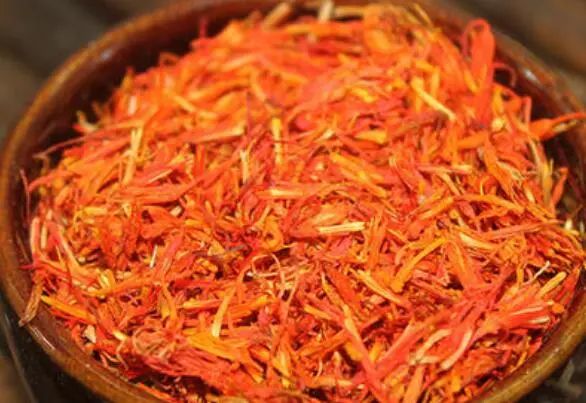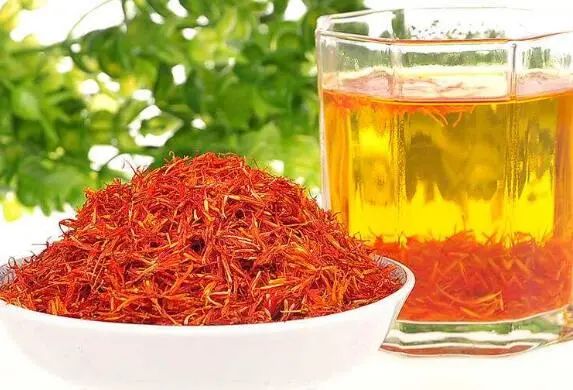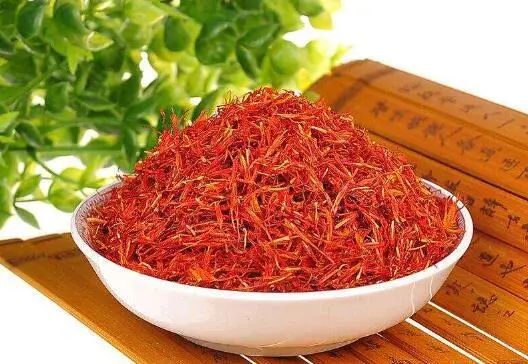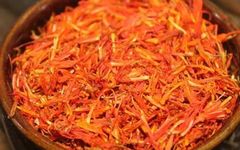————————————————————————————————————————————————————————————————–
Safflower (Honghua) is a traditional Chinese medicinal herb known for its ability to invigorate blood circulation and is also used as a flavoring agent. It is commonly found in daily life, with some people preferring to brew it in water. In addition to being used for brewing tea or decoction, it can also be used to make medicinal wine. Today, I will introduce the effects and benefits of safflower-infused wine.

Effects and Benefits of Safflower-Infused Wine
1. Invigorates Blood and Regulates Menstruation
Safflower itself is a herb that invigorates blood and accelerates blood circulation. When brewed into wine, its effects are enhanced, preventing stagnation of qi and blood in the body. It has a significant alleviating effect on women suffering from menstrual irregularities and abdominal pain during menstruation due to poor blood circulation.
2. Unblocks Meridians
Drinking safflower-infused wine can also help unblock the meridians, improving the health of muscles and bones. It has a notable relieving effect on symptoms such as numbness of limbs, stroke-related paralysis, and subcutaneous bruising caused by meridian obstruction. Particularly, when individuals experience pain or stagnation in their limbs, consuming safflower-infused medicinal wine can alleviate these symptoms.

3. Prevents Hypertension
Drinking safflower-infused wine also provides certain protective effects on cardiovascular health. It not only promotes vasodilation but also enhances the antioxidant capacity of blood vessels and increases platelet activity. Additionally, it accelerates the dissolution of fibrin in the body, preventing elevated blood pressure and blood lipids, and reducing the incidence of thrombosis.
4. Invigorates Blood and Resolves Stasis
Invigorating blood, resolving stasis, and alleviating swelling and pain are also important effects of safflower-infused wine. When individuals accidentally suffer from bruises or internal stasis due to injuries, they can consume safflower-infused wine to help disperse the stasis and significantly reduce pain. Applying the safflower-infused medicinal wine directly to the injured area can also help the stasis dissipate quickly, with particularly noticeable effects in reducing swelling and pain.
Safflower 
Source: The tubular flower crown of the Asteraceae plant safflower
Taste and Properties: Pungent, Warm
Functions: Invigorates blood, unblocks meridians, dispels stasis, alleviates pain.
Dosage: Internal use: Decoction, 3-12 grams.
Treatment for Cancer: (“Kaibao Bencao”) states: “It is indicated for postpartum blood collapse, mouth restriction, residual blood in the abdomen, line pain, fetal death in utero, and should be taken with wine; it is also indicated for gu poison and bleeding.” (“Bencao Yiyi Supplement”) states: “It is often used to break stasis, and used less for nourishing blood.” (“Bencao Gangmu”) states: “Invigorates blood, moistens dryness, alleviates pain, disperses swelling, and unblocks menstruation.” Clinically, it is commonly used to treat esophageal cancer, cervical cancer, acute myeloid leukemia, pancreatic cancer, gastric cancer, liver cancer, rectal cancer, and choriocarcinoma, particularly in cases of blood stasis obstruction.
Treatment for Esophageal Cancer
Peach kernel and safflower, each 9 grams; Angelica tail, red peony, and sappan wood, each 15 grams; Curcuma, 10 grams; Salvia and purple gromwell, each 30 grams; Honeysuckle and self-heal, each 15 grams. Decoction for oral administration, 1 dose per day (“Integrated Treatment of Cancer with Traditional and Western Medicine”).
Treatment for Cervical Cancer
Safflower and alum, each 6 grams; Ephedra, 30 grams. Decoction, first fumigate then wash the vulva. 1-2 times daily, each time for 30-60 minutes. Each dose can be reused for 3-4 days [“Shanghai Journal of Traditional Chinese Medicine”] 1984(9).
Treatment for Skin Abscesses Caused by Acute Myeloid Leukemia
Safflower, frankincense, and myrrh, each 30 grams; small umbrella mushroom, 150 grams; gardenia, 60 grams; all ground into a fine powder, mixed with egg white for application or hot water for application to the affected area. [“New Chinese Medicine”] 1977(4).
Treatment for Pancreatic Cancer
Safflower, peach kernel, sparganium, fried rhizoma of five-leaf, cattail pollen, huanglian, huangbai, wuyao, yanhusuo, chicken inner gold, angelica, and pangolin, each 10 grams; Salvia, peony root, and white peony, each 30 grams; curcuma, 15 grams; self-heal, 20 grams. Decoction for oral administration, 1 dose per day. (“Tumors: Clinical Essentials”).
Treatment for Esophageal Cancer and Gastric Cancer
20 large centipedes, 10 grams of safflower; place both in 500 milliliters of 60-degree white liquor, soak for over 20 days, then dilute the liquid with cold boiled water (60% cold boiled water, 40% medicinal wine) for consumption, approximately 500 milliliters per week. (“Effective Anti-Cancer Recipes”).
Treatment for Liver Cancer
Angelica, raw rehmannia, peach kernel, red peony, ox knee, chuanxiong, safflower, bitter orange, bupleurum, each 9 grams; platycodon and licorice, each 3 grams; curcuma and salvia, each 15 grams. Decoction divided into 2 doses, 1 dose per day (“One Thousand Anti-Cancer Chinese Medicines”).
Treatment for Rectal Cancer
Peach kernel and safflower, each 10 grams; angelica, 12 grams; stone see-through, 30 grams; curcuma and pangolin, each 15 grams; raw rhubarb (added later), 6 grams; half-branch lotus and white flower self-heal, each 30 grams. Decoction for oral administration, 1 dose per day. (“Secret Recipes for Cancer”).
Treatment for Choriocarcinoma
Wulingzhi, 6 grams; safflower, 3 grams; sea cucumber, 10 grams; cattail pollen and madder root, each 6 grams; wuyao, 3 grams; belamcanda, 9 grams; salvia, 15 grams; angelica, mountain lily, cattail pollen, fried donkey-hide gelatin, and myrrh, each 9 grams; licorice, 6 grams. Decoction divided into 2 doses, warm for oral administration, 1 dose per day. (“Tumors: Comprehensive Recipe Collection”).

Many simple and practical remedies left by our ancestors!
If you think you might need them, save them for later and share them with your friends, as they can truly help everyone!
Disclaimer: This article is reproduced from the internet and published materials. If there is any infringement, please contact us for removal. The various prescriptions and remedies mentioned are for informational sharing only and do not constitute medical advice, recommendations, or guidance. Please use them under the guidance of a physician.


